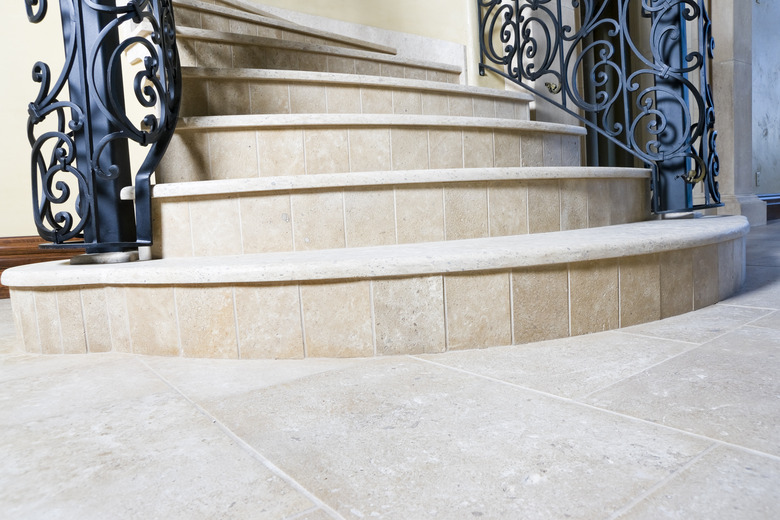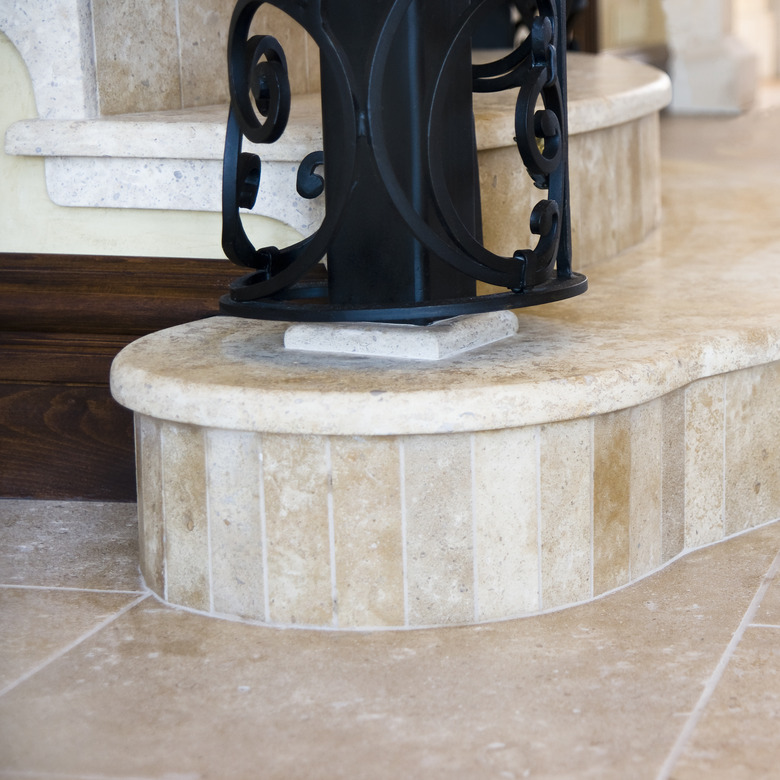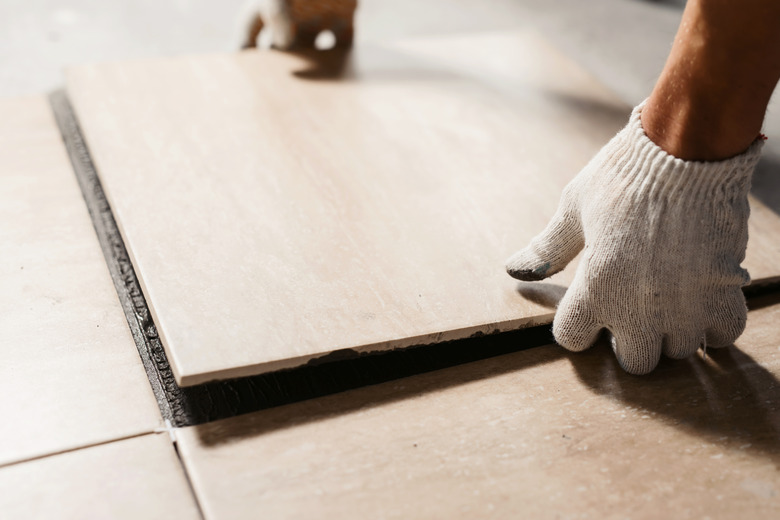Limestone Tile: A Homeowner's Tile Flooring Guide
If you're looking for a natural stone to use in your home, there's a lot to love about limestone tile. It's affordably priced and full of gorgeous earth tones, and it can be used both indoors and outdoors. Plus, it doesn't get any more classic than limestone — as Smithsonian notes, this material dates as far back as the pyramids. Whether you're considering it for an outdoor garden path or for a bathroom renovation, learning more about the advantages of limestone can help you figure out if it's the stone you'll love in your home for years to come.
Appearance of Limestone
Appearance of Limestone
Appearance is one of the first things that people love about limestone. Limestone is a natural stone and a sedimentary rock, which means it's formed mostly from the different types of sediment it has accumulated over time. In limestone, which is formed largely on the sea floor, those sediments are mostly calcium carbonate as well as coral and the skeletal material from marine animals. That gives limestone a very natural, earthy feel.
Additionally, since it picks up so many different types of sediment, the stone can come in a wider variety of colors than many flooring options. Color tones can include rosy or light pinks, sandy or marigold yellows, cloudy grays, sleek ivories, cinnamon browns and even rich burgundies or plums. So many different shades allow designers to arrange different tones of limestone into colorful geometric mosaics and other patterns. Plus, since it's all natural, every limestone tile floor is truly one of a kind.
The Versatility of Limestone
The Versatility of Limestone
Limestone's many looks, combined with its durability, make it a highly versatile stone. Unlike more high-maintenance flooring options like wood, which doesn't hold up well against moisture or extreme climates, limestone does great in a variety of climates and both indoors and outdoors. Some homeowners love to use limestone in their backyards as well as inside their homes. That helps to create a cohesive feel between the spaces without having to outfit the entire place in a single color or texture of stone.
Some of the outdoor spaces where limestone works well include backyard patios or terraces or as garden paths where its natural graininess and earthy tones can make the walkway feel as if it's always been a part of the space. If you live in a hot climate and are often barefoot on your patio, you might consider a light shade of limestone that will be cool to the touch even during sunny summer days.
Sleek, polished limestone is also popular around home pools. Deep charcoal tiles are a great contrast to the pool's water and can help to make it appear brighter and more inviting, while limestone with shades of blues and corals can give it the feel of an all-natural, infinity-style pool, where you're not sure where the stones end and the water begins.
Is Limestone Tile Right For You?
Is Limestone Tile Right For You?
There are factors you can consider to determine whether limestone is the option that's best for you and your home:
- Durability: Limestone is softer than other natural stones, such as marble and granite. Some people prefer this softness for a flooring option, though it does make it more prone to dents, scratches and chips. However, it also has a relatively high mineral content, which does help to increase its durability. To ensure a longer lifetime, a limestone floor requires a sealant immediately after installation, which will protect it from scuffs and water damage.
- Maintenance: In addition to softness, limestone is porous, meaning it has small grooves, ridges and holes that can absorb dirt, bacteria and debris. This makes it more difficult to keep clean than some synthetic tiles like vinyl. Cleaning limestone involves sweeping to make sure it's free of dust that could scratch it, mopping it with a soft cloth, warm water and a mild cleanser (as Old House Journal notes, stay away from acids and make your cleaner is pH-neutral) and then drying it completely. Additionally, you'll likely have to reapply the sealant every few years, especially if you're installing limestone floor tile in high-traffic areas.
- Cost: If you're looking for a natural stone, limestone is far more affordable than granite and marble. There are a few cases, though, where rare or exotic limestone that must be shipped from across the globe will cost more than a local marble. Many people who want the earthy feel of a natural stone at a relatively low cost go for limestone. Others don't prioritize having a natural stone and instead opt for more affordable options like vinyl or laminate, which can mimic limestone, but these have nowhere near the durability or the natural feel of real limestone.
Styles of Limestone
Styles of Limestone
One of the biggest advantages to limestone is its incredible variety. Available in such a wide range of colors, styles and textures, it's a great option for the homeowner looking to create a unique floor.
Many people mix and match between those colors and tile sizes to create gorgeous and intricate mosaic tile designs. Since the stone is the same, it allows the look to be interesting and intriguing while still remaining sleek and elegant for a high-end feel. Some of the most popular design patterns are basketweave, herringbone and pinwheel, all of which can use a variety of limestone colors to brighten a floor. Limestone subway tiles, which are generally arranged in a rectangular pattern, are another versatile design since they can be a great no-fuss look for a limestone backyard patio or rustic decor for a country kitchen.
Other people prefer to stick to one color of limestone but choose a type where different sediments have given it a rich and detailed texture. Blue limestone tiles that have picked up tiny flecks of coral, for instance, can make you feel like you're walking right on the ocean. Other limestone comes in vein cuts or pavers. In those cuts, the appearance of fine lines and grooves makes it great for outdoor use since it makes the classic, stately stones seem as though they could have been there for centuries. In an area like a living room, limestone tiles with textured ivory and pink accents can exude a sleek, sophisticated feel and complement modern accents like limestone coffee tables.
Installing Limestone Tiles
Installing Limestone Tiles
Limestone is more affordable to install than other natural stones like marble. It's also more accessible, as it doesn't require some of the same tools and craftsmanship as some other types of stone. If you're an aspiring DIYer, you might be able to cut down on costs even more by installing the limestone on your own. The project will be a bit different depending on the size, shape and pattern of your tiles, but there are a few critical things to know about any limestone installation job.
First, take your time to arrange the tiles according to your taste. This is an especially important step with limestone since you'll want to make sure the different textures, colors and sediments look nice together or that a pattern like basketweave is to your liking. You can play around with this a little so your favorite tiles are displayed in prominent areas.
The next steps are laying the adhesive, applying a sealant and then using grout in between the tiles. Make sure to follow the manufacturer's instructions for each product, including letting each one dry before you move on to the next step. Careful installation and application will help to preserve your limestone and prevent cracks and staining.
Sealants come in a variety of finishes, from glossy polished limestone to semigloss to matte, a decision you can make based largely on personal preference. The highly polished, glossy look is more popular in bathrooms or other places where you want the appearance of a slick, clean floor, whereas matte helps preserve the earthiness of limestone in spaces like rustic kitchens or front-door walkways.
It might help to know that you don't have to live with your decision forever. If you find that down the line you don't like the finish or want to refurbish scuffed limestone floor tile, it's easier to repair, re-polish or reseal limestone than it is other natural floors. Plus, a sealant will need to be replaced at least every few years, at which point you would have the opportunity to try a different finish.
If you're intrigued by the look, durability and versatility of limestone, you can work with a professional or scour design catalogs to determine which shade, texture and finish of limestone flooring you'd love to see in your home.


